There’s something evocative about glimpsing the bright stars of the Orion constellation over a wintery landscape, but have you ever tried to photograph it?
Once autumn comes to a close and the nights get longer and colder, Orion is there there, rising higher in the sky.
The Orion constellation is a great target to photograph, and you can even do so with a smartphone.
The below image was captured with the NightCap app, but you can experiment with other apps and play with your phone camera's settings to get a good capture.
For more on this, read our guide on how to photograph the night sky with a smartphone. And you can find more astro imaging advice in our guide on how to photograph a constellation.
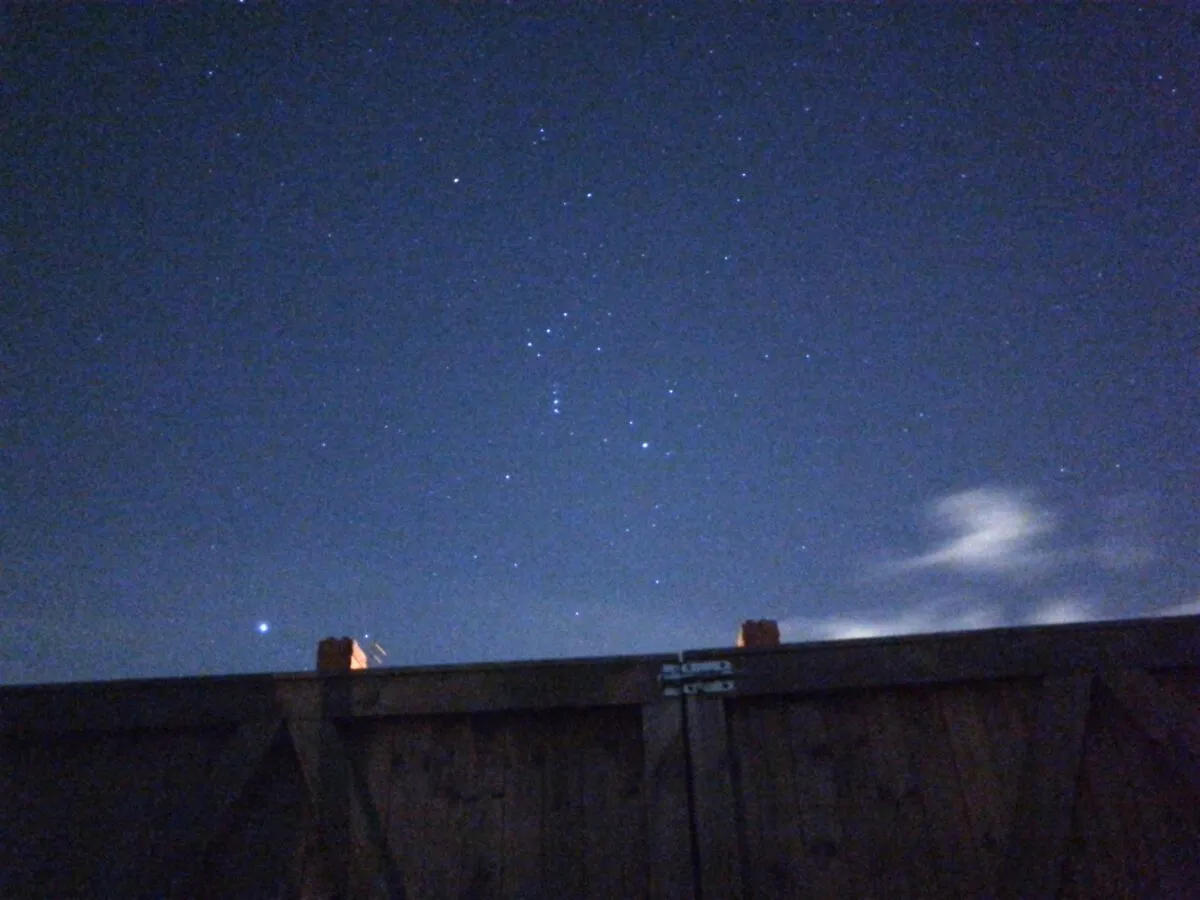
Equipment for photographing Orion
- DSLR or bridge camera
- Sturdy photographic tripod
- A wide kit lens (of the kind that comes with most DSLRs)
- Portable tracking mount to capture longer exposures (optional)
For help with settings and technical specifications, read our guide on how to use a DSLR camera.
Photograph the Orion constellation, step-by-step
Make a conceptual plan
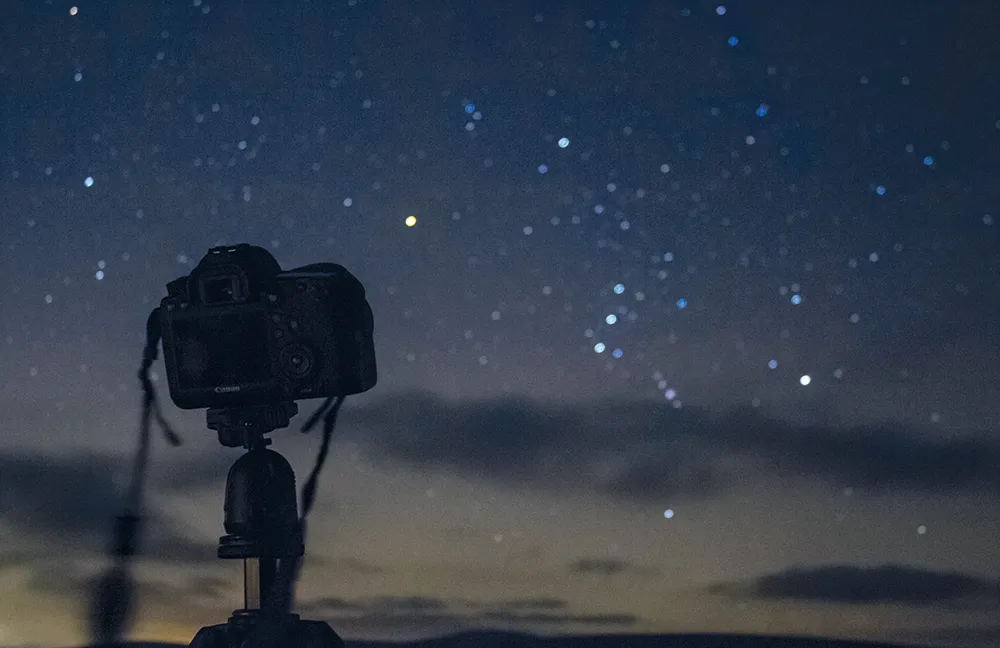
Thinking about the emotions you want to convey or elicit with your shot can help you to plan a powerful picture, and it’ll inform every stage of the photographic process.
This is covered in great detail by Mara Johnson-Groh in her guide to creating artistic astrophotos.
For example, if you wanted to evoke the harsh iciness of winter observing you might shoot Orion over an isolated, leafless tree in a barren landscape, and process in such as way as to create a hard contrast between land and sky.
Select your focal length or a prime lens
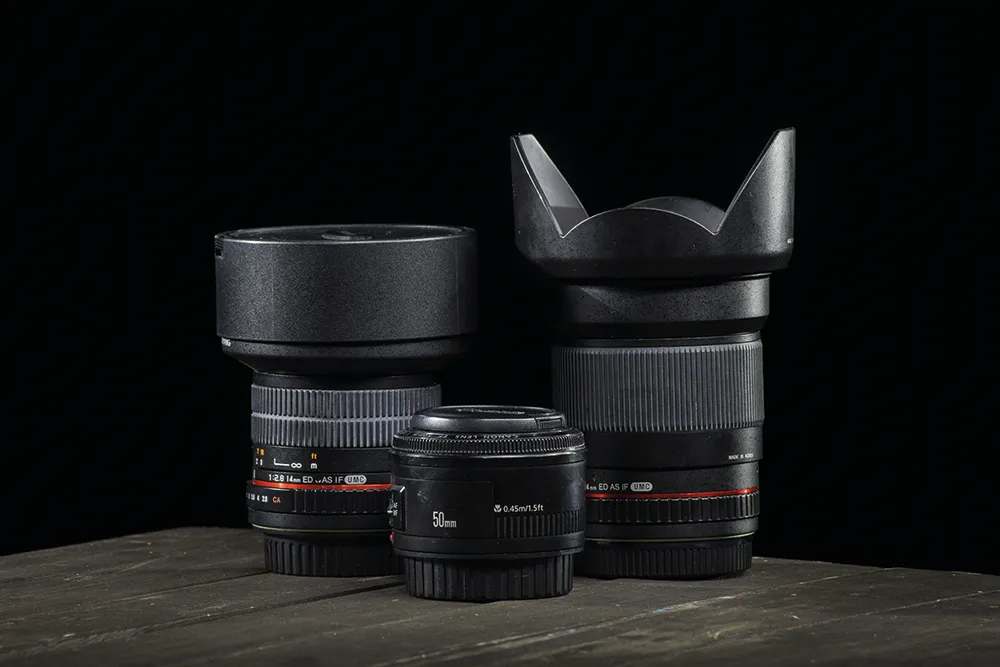
Once you’ve thought about what atmosphere you want to capture with your image, you can select the focal length you’ll be shooting at.
A typical kit lens set to around 24mm, or an equivalent prime lens, provides a wide field of view for Orion on a camera’s sensor, allowing you to fit in the brighter central stars and the Hunter’s fainter outlying ‘arms’.
Focus the view
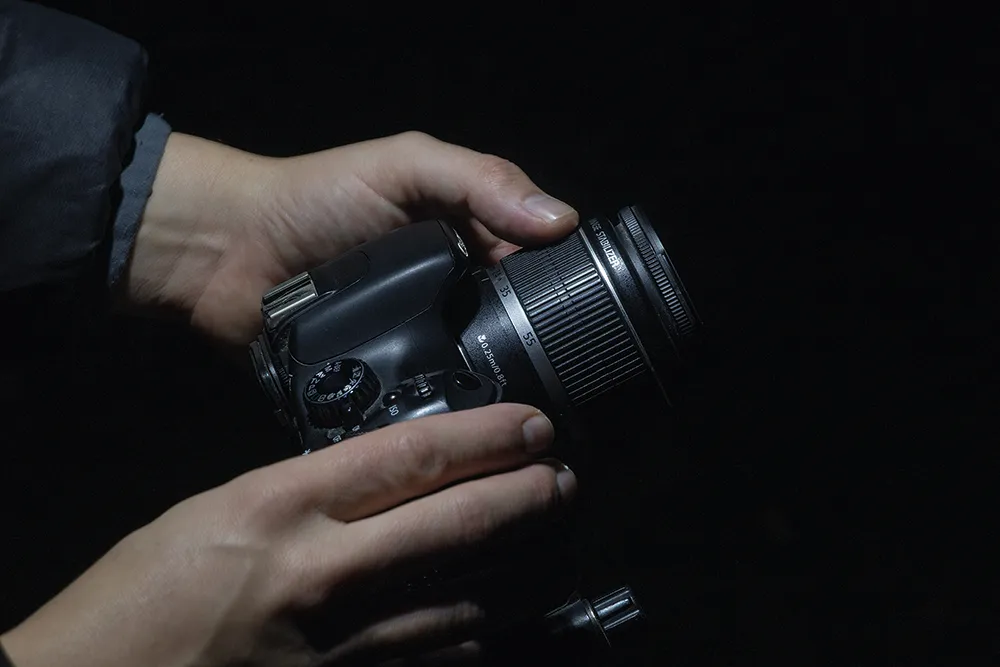
Next focus the view. Some cameras have a live preview function that can be zoomed onto a suitable star, giving you instant feedback as you make slight focusing adjustments.
With Orion there’s no shortage of bright stars that can be used for this.
Repeat the process a few times – checking the star is a small as possible – so you’re certain the image is as sharp as it can be.
Compose with the landscape and sky conditions
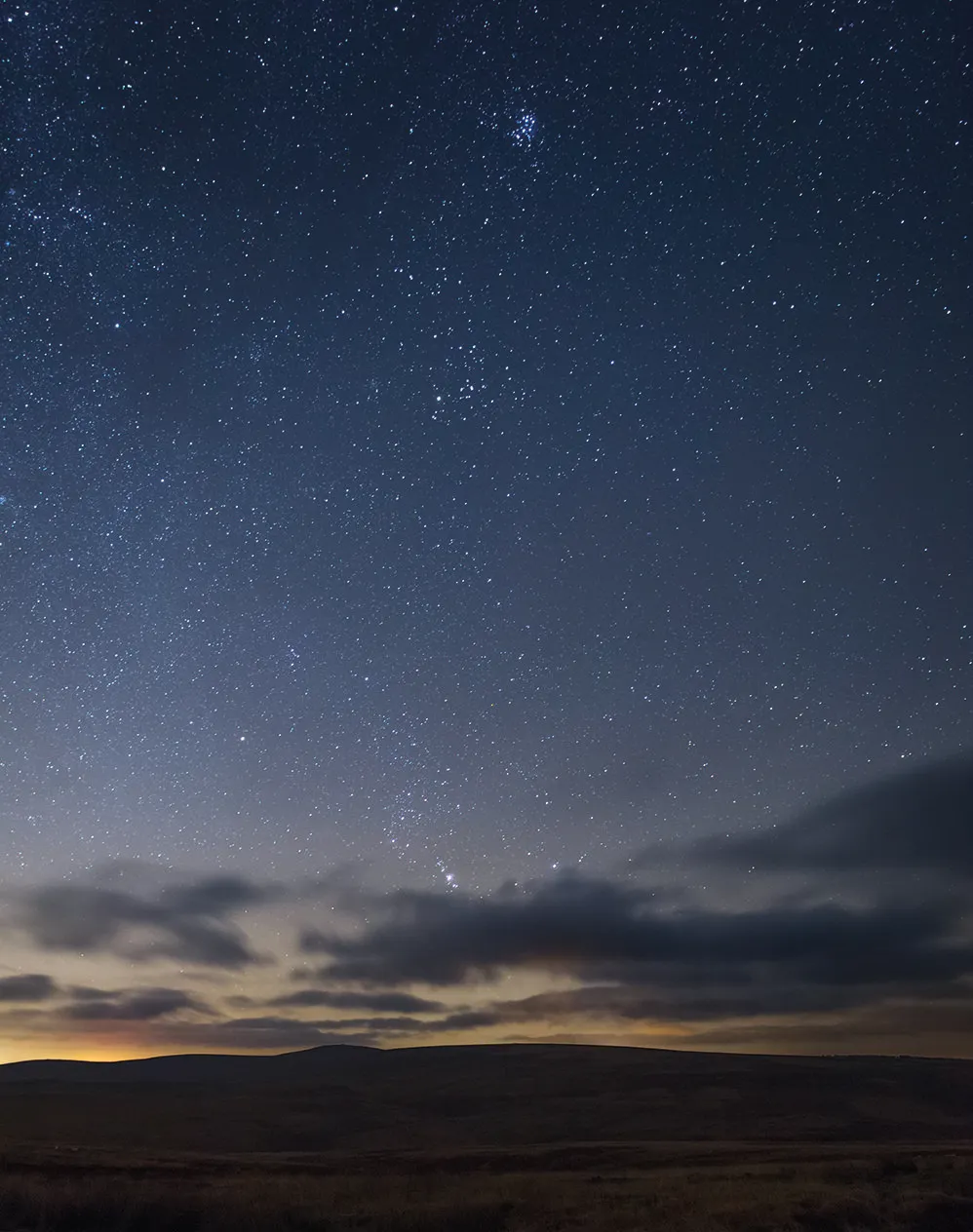
To compose your nightscape you can take short, very-high ISO test exposures to show you the balance and positioning of foreground and sky, and any structures or landscape features in frame.
Try to use the foreground – trees, buildings, etc – to lead the viewer’s eye toward Orion.
Clouds can be used as a framing device too, and thin cloud can even ‘bloat’ and enhance the colours of bright stars.
Set exposure length, aperture and ISO
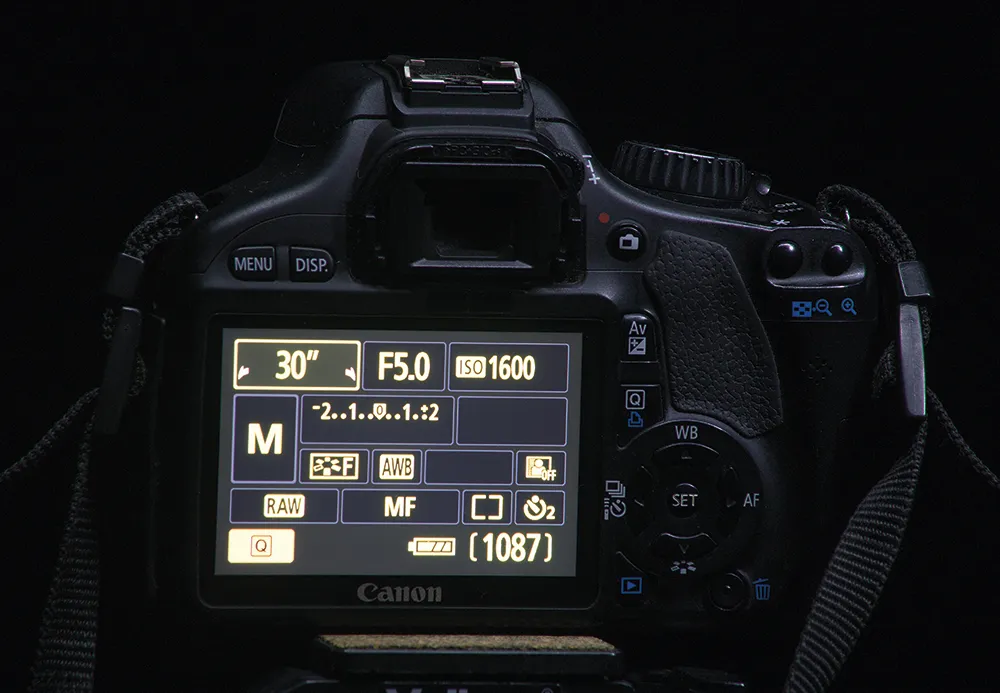
When shooting, keep the lens aperture wide open (lowest f-stop), though some lenses will perform better when reduced a few stops.
Experiment with the ISO and exposure length until you’re happy with the look.
You may need to use an exposure that very slightly trails the stars in order to define the foreground.
Process your image
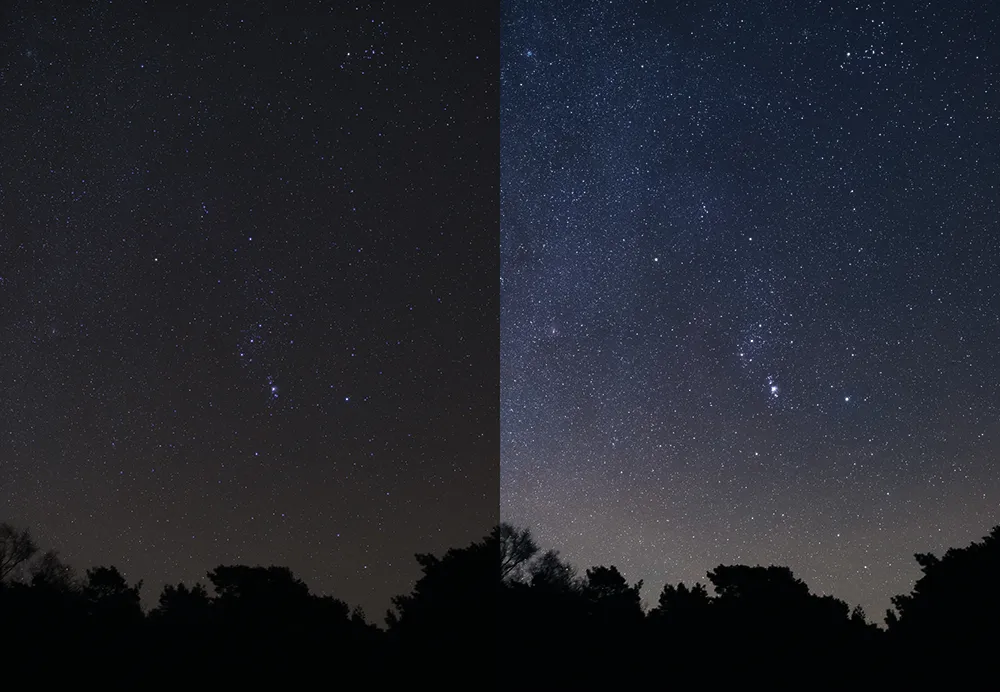
When processing nightscapes, reducing the noise in the image and bringing out foreground detail are the main challenges.
As long as you shoot in RAW format, modern image-processing software is well-equipped to handle these tasks.
In Photoshop or GIMP you can correct the colour balance, and use the ‘Curves’ tool to bring out star fields and improve overall contrast and definition.
For more advice, read our guide to astrophotography image processing.
Have you captured a photograph of the Orion constellation? Don't forget to send us your images.

